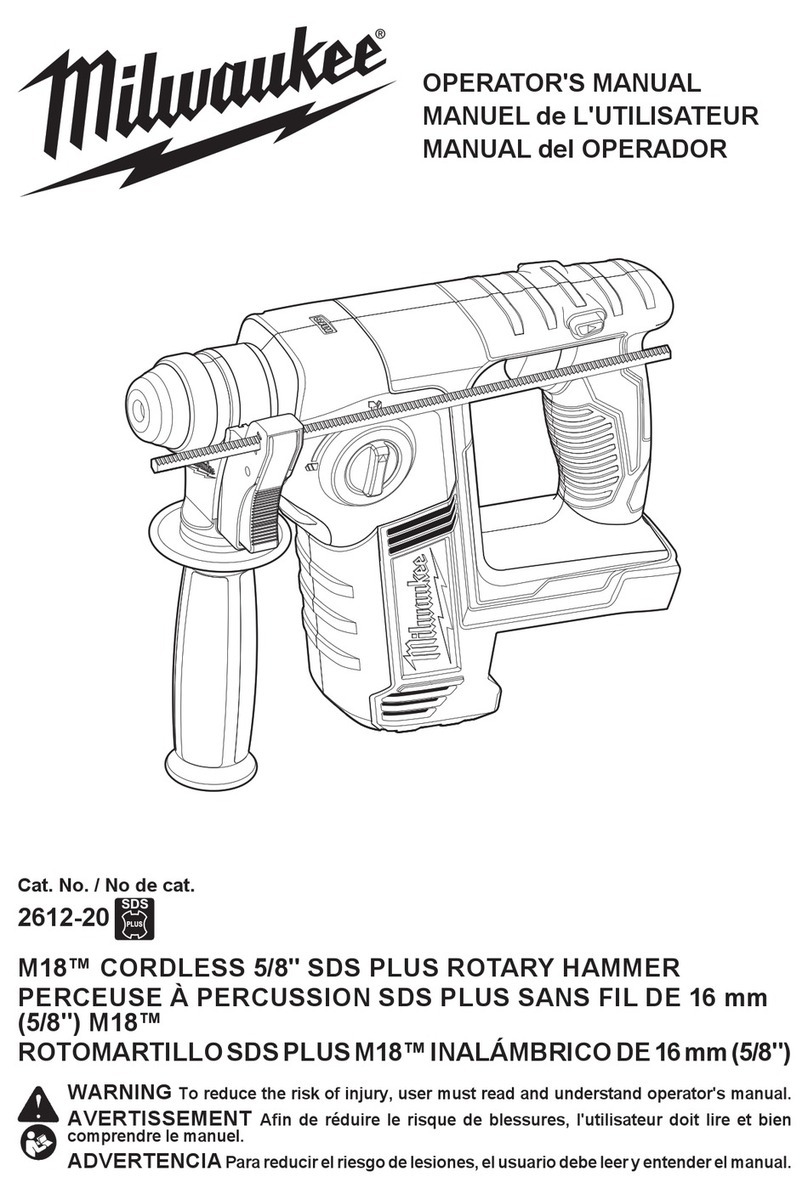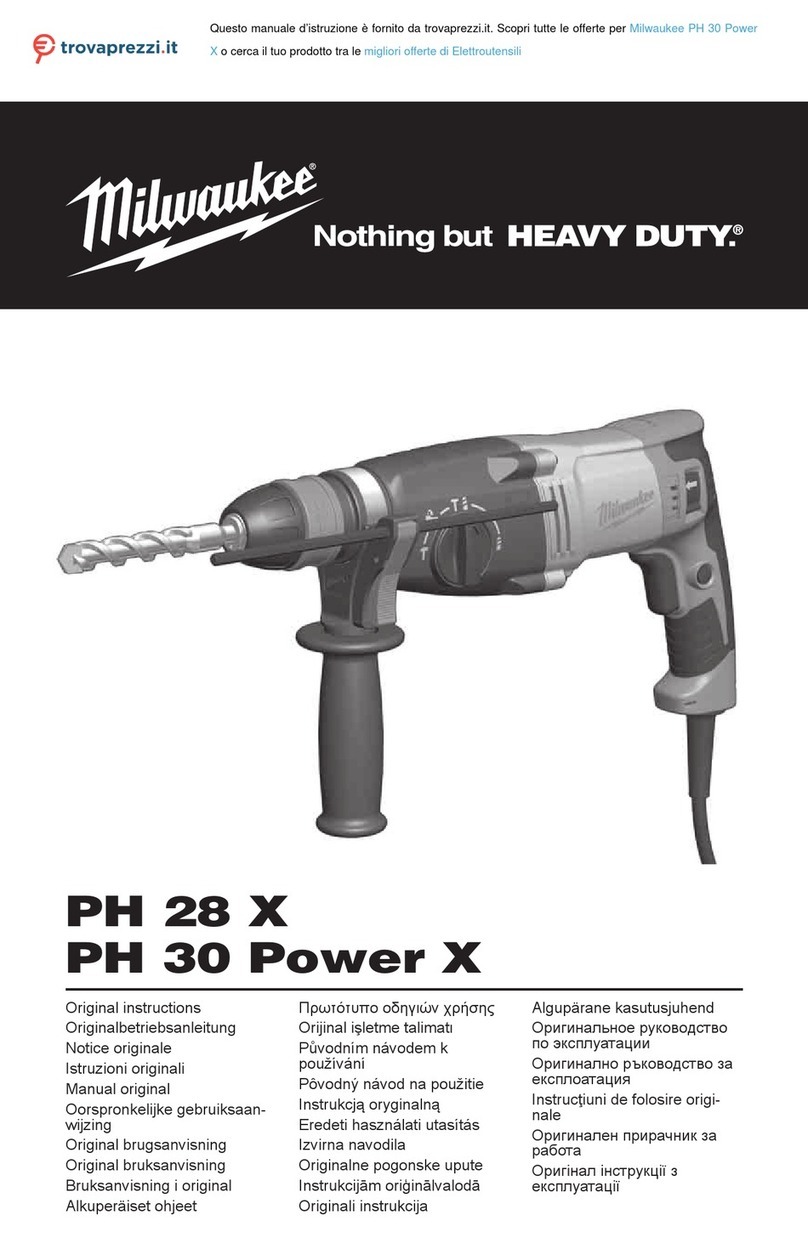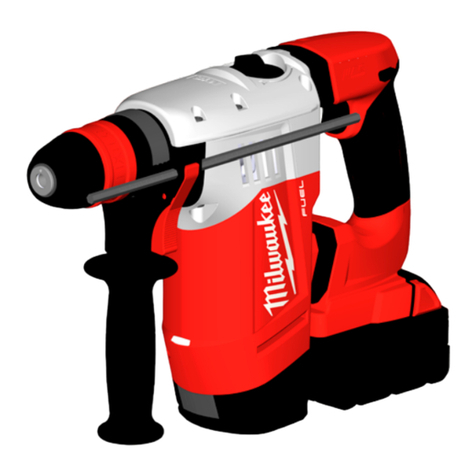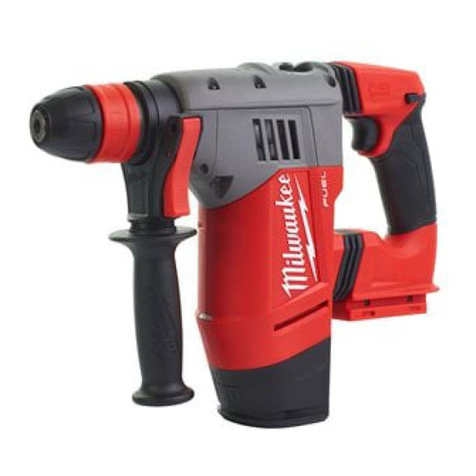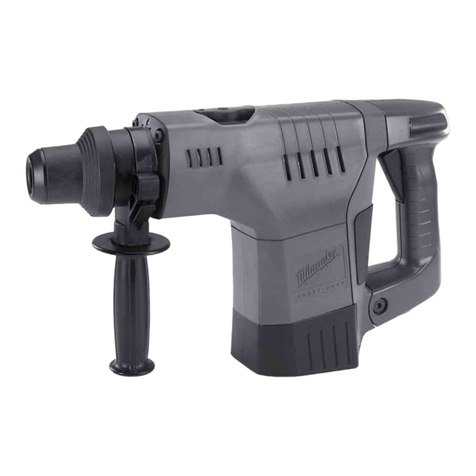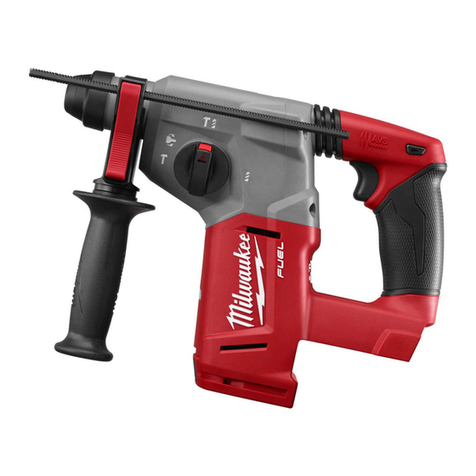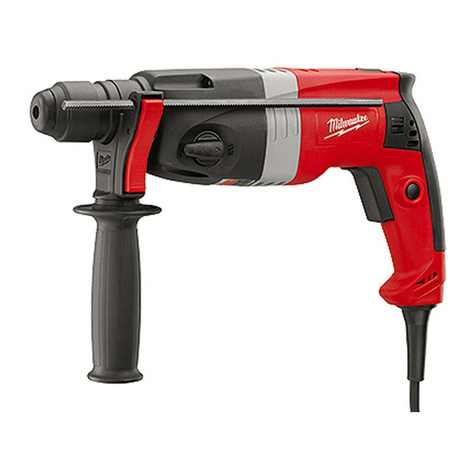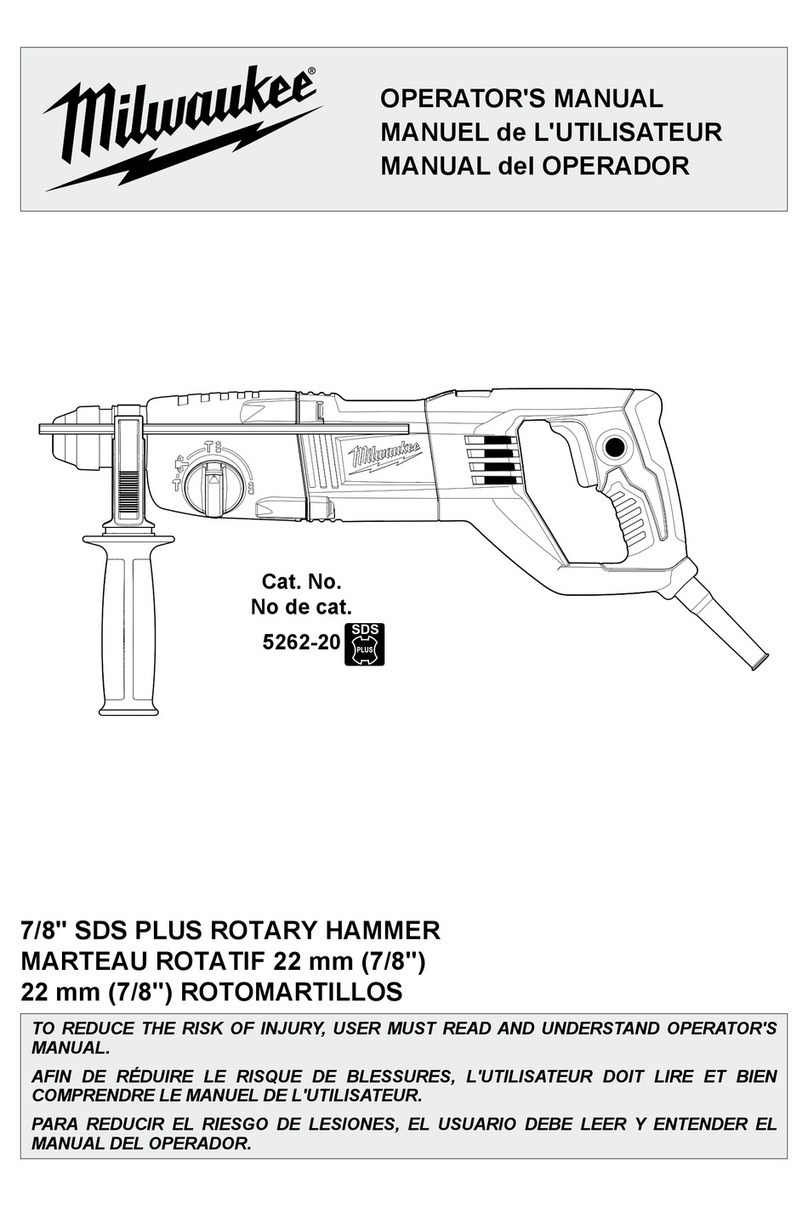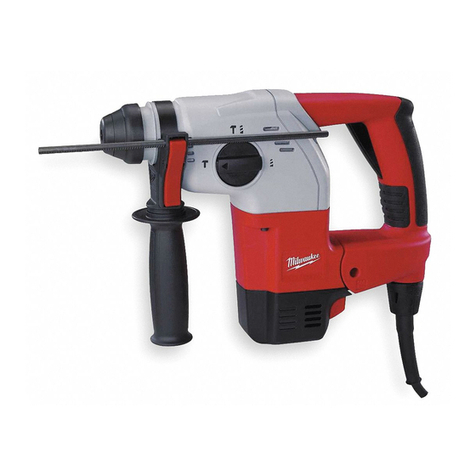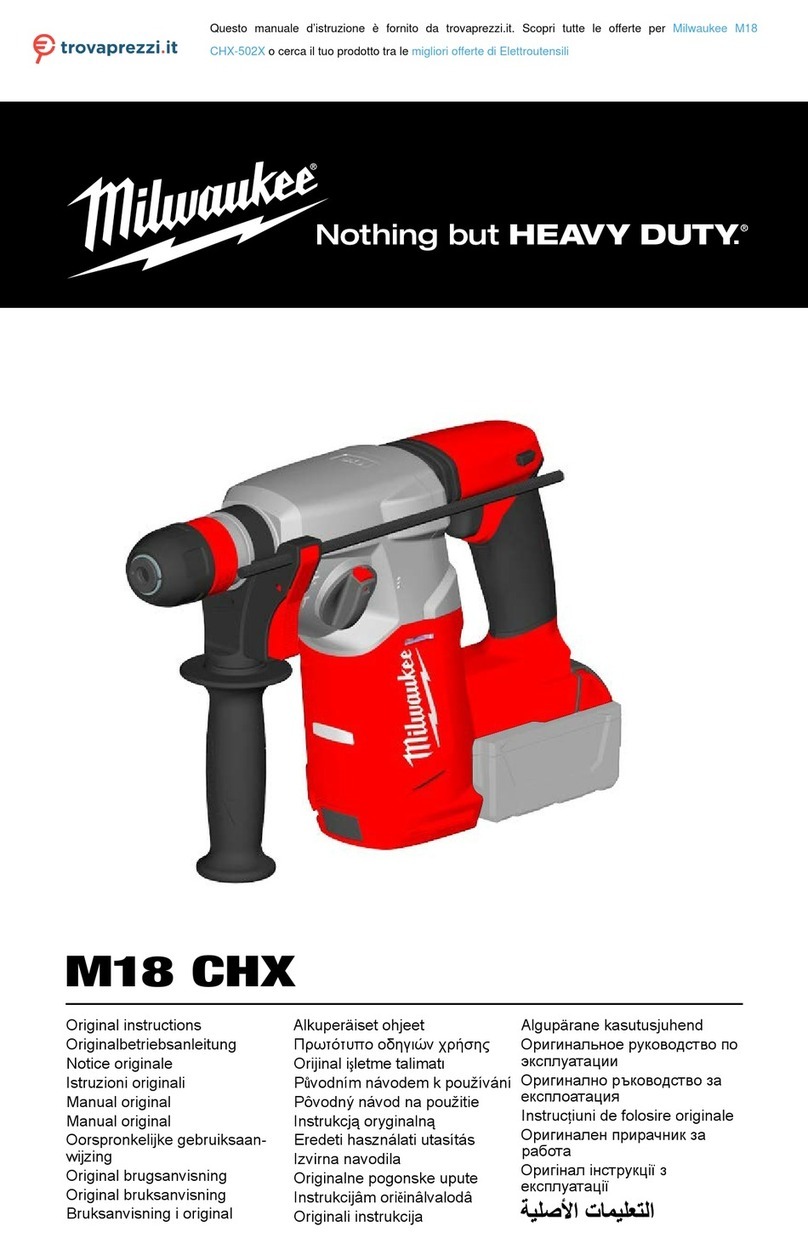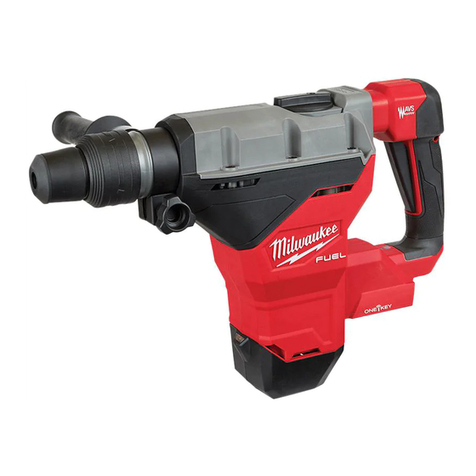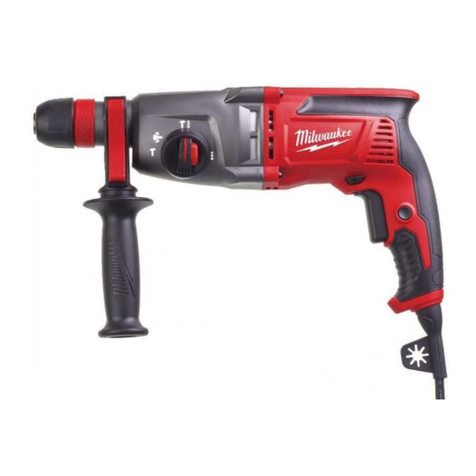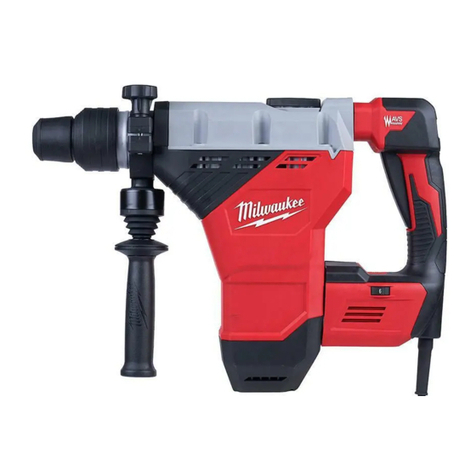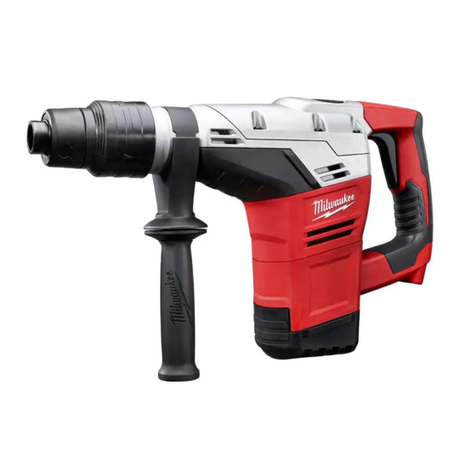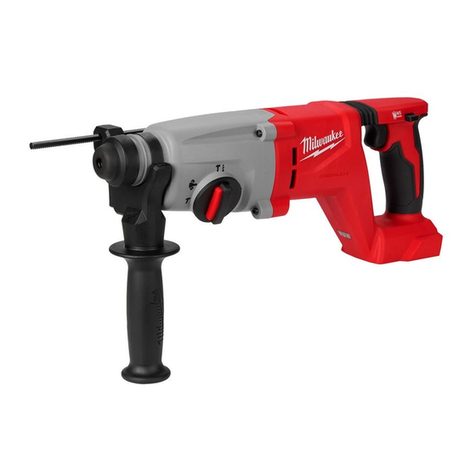Bull Points
For light demolition work.
Cold Chisels
For edging, chipping or channeling.
Scaling Chisels
For removing weld spatter or scale and cutting between drilled
holes in concrete for large openings.
Slotting Chisel
For slotting and cutting between drilled holes in concrete and
masonry.
When chiseling, hold the tool at an angle to the workpiece.
Work from a corner or close to the edge of the workpiece,
breaking off one small area at a time rather than attempting too
large an area.
Setting Self-Drilling Anchors
The MILWAUKEE 1-1/2” Heavy Duty Rotary Hammers fea-
ture a stop rotation knob which is helpful for setting
self-drilling anchors up to 7/8”. MILWAUKEE Tooth Anchor
Chucks require a “B” taper adapter.
1. Place the proper size tooth anchor chuck into the “B” taper
adapter. Then insert the “B” taper adapter into the tool and lock
it into place as described on page 1.
2. Insert the anchor into the tooth anchor chuck. Set the stop
rotation knob for hammering only. Then set the anchor on your
mark and hammer until the teeth have penetrated the concrete.
Fig. 11
3. Switch the stop rotation knob for rotary hammering and
drill until the chuck is 1/8” above the concrete. Fig. 12
NOTE: It may be necessary to clean dust and cuttings from the
anchor several times while drilling the hole.
4. Remove the anchor from the hole while the tool is running.
Clean the dust and cuttings from the anchor by pointing it
downward and turning the tool on and off several times. Clean
the dust out of the hole with a vacuum cleaner or blowout bulb.
Fig. 13
5. Place the expansion plug into the anchor and insert the
anchor into the hole. Switch the stop rotation knob back to
Hammering Only, and hammer the anchor firmly into the hole.
Fig. 14
6. Snap the head off of the anchor. To remove the head of an-
chors up to 5/8”, grasp the handles firmly and pull the tool
sharply towards you. Fig. 15
To remove the head of 5/8” to 7/8” anchors, remove the ham-
mer from the shank of the adapter and snap off the anchor head
with a hand hammer as shown. The anchor is now ready to
receive a bolt. Fig. 16
7. To remove the tooth anchor chuck, remove the “B” taper
adapter from the nose of the tool. Insert the drift pin supplied
with the adapter into the hole on the side of the “B” taper
adapter and strike it sharply to force out the tooth anchor
chuck. To remove the anchor head wedged in the tool anchor
chuck, use drift pin 48-86-0100.
Operating Instructions (continued)
Page 4
RenTrain INC RenTrain INC
To reduce the risk of personal injury and damage to
the tool or work:
•Always use the “hammering only” selection to
set the anchor. Never use the “hammering with
rotation” selection to set the anchor.
•Never switch the tool to “hammering with
rotation” until after the anchor has been set and
the tooth anchor chuck has been removed from
the anchor.
WARNING!
Fig 11
Fig 12
Fig 13
Fig 14
Fig 15
Fig 16
1/8”



